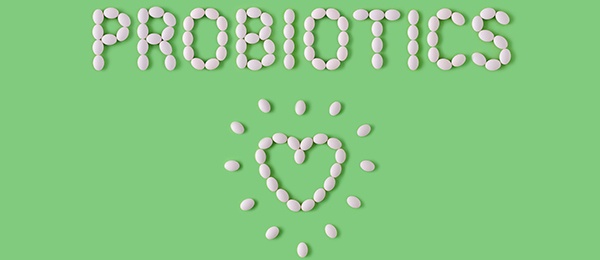Owing to enhancements in oral health care in recent years, a larger percentage of the population is retaining their natural teeth. However, gingival recession is more common in an aging population, leading to an increased prevalence of root caries in this group. There is a paucity of scientific data in the literature illuminating the risk factors for failure of active cervical carious lesions (aCCLs) restorations or for reactivation of inactive cervical carious lesions (iCCLs) subsequent to monitoring or secondary preventive strategies such as fluoridation or individualized home care instructions.
In a study first reported online November 10, 2016, in Clinical Oral Investigations, the authors describe a retrospective, noninterventional study to examine risk factors for failure of restorative management of aCCLs and failure of nonrestorative approaches to iCCLs. Files from patients of record at a single private practice in Germany from 1997 through 2014 were examined for presence of aCCLs or iCCLs. Inclusion criteria were identification of the carious lesion at least 6 months before the last recall visit, the cervical lesion being located on the buccal surface of the tooth, and an indication in the record whether the lesion was active or inactive. Exclusion criteria ruled out teeth scheduled to be restored with a crown or bridge or be extracted, as well as cervical lesions located on third molars.
For aCCLs, the observation period began at the time of lesion restoration. If the restoration was repaired, replaced, or scheduled for such at the last recall appointment, that restoration was viewed as a failure. For iCCLs, the observation period initiated at lesion diagnosis. If the iCCL needed to be restored at the last recall visit, the intervention was deemed a failure.
A total of 295 patients with a mean age of 45 years who had a total of 577 aCCLs or iCCLs were included in the study; 345 aCCLs and 232 iCCLs were followed for 0.6 through 10 years. The annual failure rate for aCCLs was 1.7% and for iCCLs was 4.3%. Data extraction from the charts demonstrated that for aCCLs, tooth type, number of checkups per year, number of CCLs, and risk level for caries were strongly associated with an enhanced failure rate (P = .25). For iCCLs, age, sex, number of checkups per year, number of root caries, risk level of caries, and decayed, missing, and filled teeth at date of initial iCCL diagnosis were strongly associated with failure (P ˂ .25).
The researchers found that aCCLs in patients with more than 2 recall visits per year showed a statistically significantly greater failure than those in patients having recalls less than twice per year (P ˂ .001). Likewise, iCCLs being evaluated twice or more per year had a significantly higher failure rate than those being examined less often than twice per year.
The authors advocate for prospective controlled trials to determine clinical efficacy. They note, however, that this retrospective analysis conducted on a large number of patients treated by a single dentist in 1 private practice with long-term observation may reflect the reality of current dental practice more closely than prospective studies are able to.
Read the original article here or contact the ADA Library & Archives for assistance.
Xerostomia is a subjective sensation of dry mouth. The most common form of xerostomia is medication induced. Many commonly prescribed drugs induce hyposalivation, including antihypertensives, diuretics, bronchodilators, proton pump inhibitors, antihistamines, antidepressants, and antipsychotics. Currently available saliva-stimulating drugs produce a variety of adverse effects in patients with systemic diseases.
Researchers conducted a randomized, double-blind, placebo-controlled clinical trial of 60 patients diagnosed with xerostomia attending the Department of Oral Medicine (Faculty of Medicine and Dentistry, University of Murcia, Spain), to test whether the antioxidative effects of lycopene-enhanced extra virgin olive oil applied as a spray would offer a safe and effective treatment for medication-induced dry mouth compared with a placebo spray. They published their findings in the February 2017 issue of Journal of Oral Pathology and Medicine.
The study sample included 60 patients (7 men, 53 women) with medication-induced xerostomia. Inclusion criteria included older than 18 years, dry mouth more than 3 months’ duration, response of at least 3 centimeters (of 10) on a visual analog scale (VAS) to the query “Do you feel that your mouth was continuously dry for over 3 months?” and unstimulated salivary flow under 1.5 mL/15 minute. Exclusion criteria included hypersensitivity to any components of study materials, history of head and neck radiation therapy, diagnosis of Sjögren syndrome, and pregnancy or lactation.
Patients were divided equally into the intervention or placebo group. Participants in the intervention group received a 250-mL spray container with extra virgin olive oil with lycopene 300 parts per million. Participants in the placebo group received a similar container, which included water and dye but no active ingredients. All patients were instructed to apply the product as a spray (1.5 mL) intraorally 3 times daily for 12 weeks. Unstimulated salivary flow was measured in all patients at 0 and 12 weeks. All patients completed the 7-item VAS at 0 and 12 weeks to evaluate xerostomia symptoms, and they responded to the Oral Health Impact Profile (14-item version) assessing changes in patient quality of life at 0 and 12 weeks.
After 12 weeks, an increase in unstimulated salivary flow rate was demonstrated both in the intervention group (P = .001) and in the placebo group (P = .003). Statistically significant differences were noted in the intervention group after 12 weeks for VAS item 1 “Rate the difficulty you experience in speaking because of dryness” (P = .03), item 3 “Rate how much saliva is lacking in your mouth” (P = .03), and item 6 “Rate the dryness of your lips” (P = .04). Analysis of Oral Health Impact Profile (14-item version) results demonstrated a significant difference in the intervention group after 12 weeks of treatment (P = .001) but none in the placebo group (P = .10).
The goals of treating dry mouth are to enhance salivary secretion and alleviate symptoms without producing side effects. The researchers found that spray applications of lycopene-enhanced olive oil were effective in ameliorating multiple symptoms of dry mouth, improving salivary flow rate, and patient quality of life. A statistically significant difference between the intervention and placebo intergroup comparative analysis was not demonstrated. Thus, it is possible that topical spray itself led to some relief of symptoms, whether it contained the active ingredient or not. The authors propose a follow-up trial to investigate the efficacy of lycopene-enriched olive oil delivered as a mouthrinse compared with spray application. They also suggest further investigations using different questionnaires, examining whether patients with non–drug-induced xerostomia may benefit from this active agent, and assessing the mechanism of antioxidant benefits to oral health.
Read the original article here or contact the ADA Library & Archives for assistance.
Probiotics can reduce the risk for oral candidiasis in elderly patients
Clinicians have witnessed a marked increase in the number of cases of oral candidiasis among elderly people in recent years. Candidiasis occurs, in large part, owing to a dysbiosis among microorganisms in the oral cavity. This dysbiosis is most frequently due to use of broad-spectrum antibiotics and immunosuppressive agents; diabetes, being very young or very old, malignancies, and AIDS were less frequent provoking causes. Systemic antifungal agents can have profoundly negative side effects. Probiotics, normal healthy microorganisms resident in mucous membranes, have been efficacious in treating a number of conditions. However, reports of their efficiency in preventing oral candidiasis in elderly people have been conflicting.
The authors undertook a meta-analysis and systematic review of randomized controlled trials to appraise the usefulness of probiotics in preventing oral candidiasis in elderly people. The results of this study were published in the November 2017 issue of Archives of Oral Biology. PubMed/MEDLINE, Embase, and the Cochrane library databases were searched for relevant articles. Inclusion criteria were randomized controlled trials that compared probiotics with placebo, participants who were independent, healthy elderly people, studies with an interventional aim of preventing Candida-associated stomatitis using probiotics, studies producing a 2 x 2 table of test performance, and studies with a sample size exceeding 30 participants. Exclusion criteria included HIV status, recent organ transplantation, or heart disease.
Four studies were included in the meta-analysis. The total number of participants was 595 with follow-up times ranging from 5 through 16 weeks. A test for heterogeneity had high homogeneity for this meta-analysis. Although 1 of the 4 studies did not find a significant difference between the probiotic and placebo groups, it did demonstrate a reduction in the incidence of candidiasis in the treatment group. The 4 trials, taken together, demonstrated significant results, with both odds ratios (OR) and 95% confidence intervals (CI) less than 1. The combined OR of the 4 studies was 0.54 (95% CI, 0.38 to 0.77). The meta-analysis, therefore, determined that probiotics were efficacious in lowering the prevalence of high Candida counts.
The mechanism by which different species of probiotics suppress Candida may vary. These mechanisms may include competition for binding sites, availability of substrates, production of chemomodulators, immunostimulation, and suppression of hyphal filamentation and mycelial development. The authors propose that further research is necessary to reproduce these findings in a larger-scale, global, multicenter prospective context. They also advocate that clinical trials be performed on patients of different ages and socioeconomic backgrounds as vehicles to suggest probiotic formulations, dosages, and delivery schedules for these products.
Read the original article here or contact the ADA Library & Archives for assistance.
10-year study compares treatment options in the bilateral shortened dental arch
The absence of all molars in 1 dental arch is referred to as a shortened dental arch (SDA). Although several management strategies are available when dental implants are not an option, most of the literature comparing these strategies has offered low levels of evidence.
Results of a 10-year multicenter randomized controlled trial were published in the January/February 2018 issue of The International Journal of Prosthodontics. Researchers compared the long-term outcomes of two different nonimplant treatments in the bilateral shortened dental arch.
Inclusion criteria were patients older than 35 years who were missing all molars in 1 arch (study arch) and with at least the canine and 1 premolar being present on each side of the study arch. Patients were assigned to 1 of 2 treatment arms. In the molar replacement arm, molars were replaced by a partial removable dental prosthesis (PRDP) retained using precision attachments connected to splinted crowns or a fixed dental prosthesis (FDP) on the most distal abutment tooth. In the SDA group, molars were not replaced but a cantilever (FDP) for replacement was used to replace any missing second premolars.
The primary outcome measure was time to first tooth loss in the patient overall. Secondary outcome measures included time to first tooth loss in the study arch and time to first loss of a distal-most tooth in the study arch. Outcome variables were assessed at baseline, after 6 months, annually from 1 through 5 years and at 8 and 10 years after initial treatment. The researchers measured clinical variables including decayed, missing, and filled teeth, plaque index, vertical clinical attachment loss, pocket probing depth, and bleeding on probing. All patients participating in the trial were included in the intention-to-treat (ITT) analysis regardless of their per-protocol (PP) assignment. The null hypothesis was that there would be no difference between the treatment strategies.
A minority of patients kept their PP status unchanged throughout the study. The PP analysis was adapted and analyzed as an as-treated item (PP/AT). Within the PP/AT analysis, participants were included only as long as they kept their PP prosthetic assignment. The influence of risk factors on tooth loss was analyzed using Cox regression analysis, with results expressed as hazard ratios (HR) with 95% confidence intervals.
A total of 215 participants were initially enrolled in the study, and 82 remained at the time of the 10-year assessment. All participants who began treatment were retained in the study despite first tooth loss to analyze secondary outcomes and evaluate cases of loss of multiple teeth. A total of 189 teeth were lost, and of those, 61 were first tooth losses after treatment. No patterns were noted regarding the tooth loss. For the ITT analysis, the primary and secondary outcomes were each evaluated individually. None of the group differences were found to be significant. One hundred patients were included in the PP analysis. At the 10-year evaluation, 13 target events had occurred in the PRDP group and 8 in the SDA group (P = .49). Only patients who kept their PP status at 10 years were included in this portion of the study. There were so few patients still under evaluation for this analysis (0, PRDP; 3, SDA) that separate further analyses were not realistic. A scant 3 PRDP and 7 SDA patients lost their PP prosthetic status without tooth loss. Therefore, the PP/AT analysis produced findings comparable with the ITT analysis. No significant group differences were noted (time to first tooth loss P = .40, time to first tooth loss in study arch P = .51, and time to first loss of distal-most tooth in study arch P = .57). The multivariate analysis using a multiple Cox regression model determined that the covariates age (HR, 1.033; P = .03) and decayed, missing, and filled teeth (HR, 1.21; P = .03) were significant for time to first tooth loss overall.
Randomized controlled trials are the most valid method for acquiring accurate data on clinical long-term outcomes comparing prosthodontic treatments. The authors compared conventional fixed and removable prosthodontic management strategies for SDA, no significant differences could be demonstrated for the primary outcome so that the null hypothesis could not be rejected. The results indicate that both treatment options are viable strategies. The authors suggest that when faced with the clinical scenario of SDA, clinicians should consider patient preferences when deciding on the prosthodontic option to be used.
Read the original article here or contact the ADA Library & Archives for assistance.
Advantage Arrest SDF 38%
Arrest is the first and only American-made SDF, a must-have for every dental office. Advantage Arrest is the only tinted SDF formula, enhancing placement visualization, and is available in an economical 8 mL bottle and unit-dose packaging for enhanced asepsis. Advantage Arrest is an immediate and effective desensitizer (D9910), a discloser of incipient lesions (D1354), and a proven caries preventive agent (D1208). Elevate Oral Care preventive care consultants have conducted educational staff meetings for thousands of oral health professionals since launching Advantage Arrest in 2015. To purchase Advantage Arrest directly and/or schedule your informative staff meeting today click here.
Full Library. One Price.  ADA CE Online subscriptions are here! Get unlimited access to the entire ADA CE online library, including JADA, for one year from purchase. Access anywhere, anytime. With new courses being added every month, you’ll never run out of education opportunities. Group subscriptions are also available, check it out now!
ADA CE Online subscriptions are here! Get unlimited access to the entire ADA CE online library, including JADA, for one year from purchase. Access anywhere, anytime. With new courses being added every month, you’ll never run out of education opportunities. Group subscriptions are also available, check it out now!

The consulting editor for JADA+ Scan — Healthy Aging is Linda C. Niessen, DMD, MPH; Dean and Professor; Nova Southeastern University College of Dental Medicine. |
|








